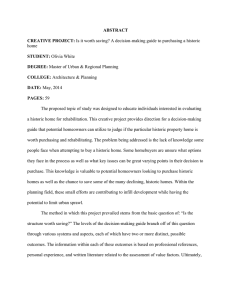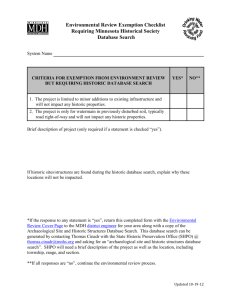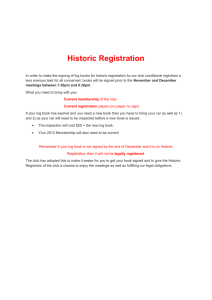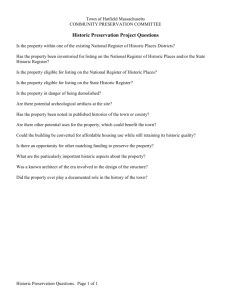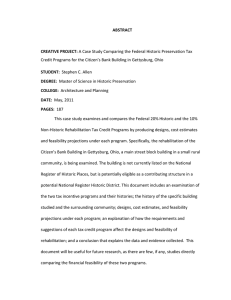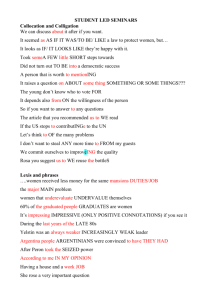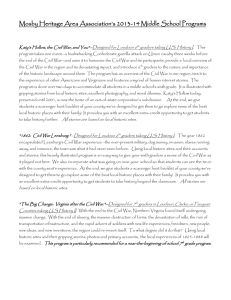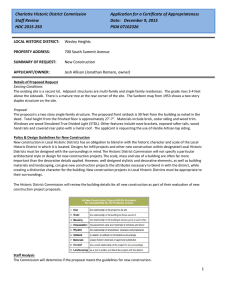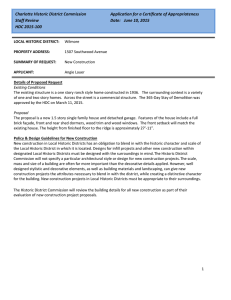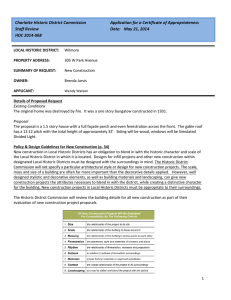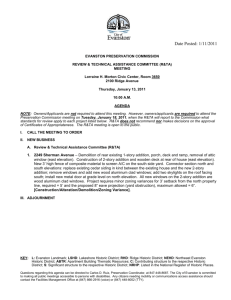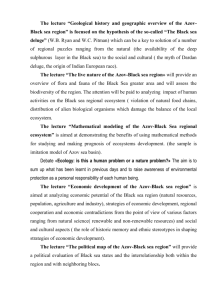innovative historic house interpretation
advertisement
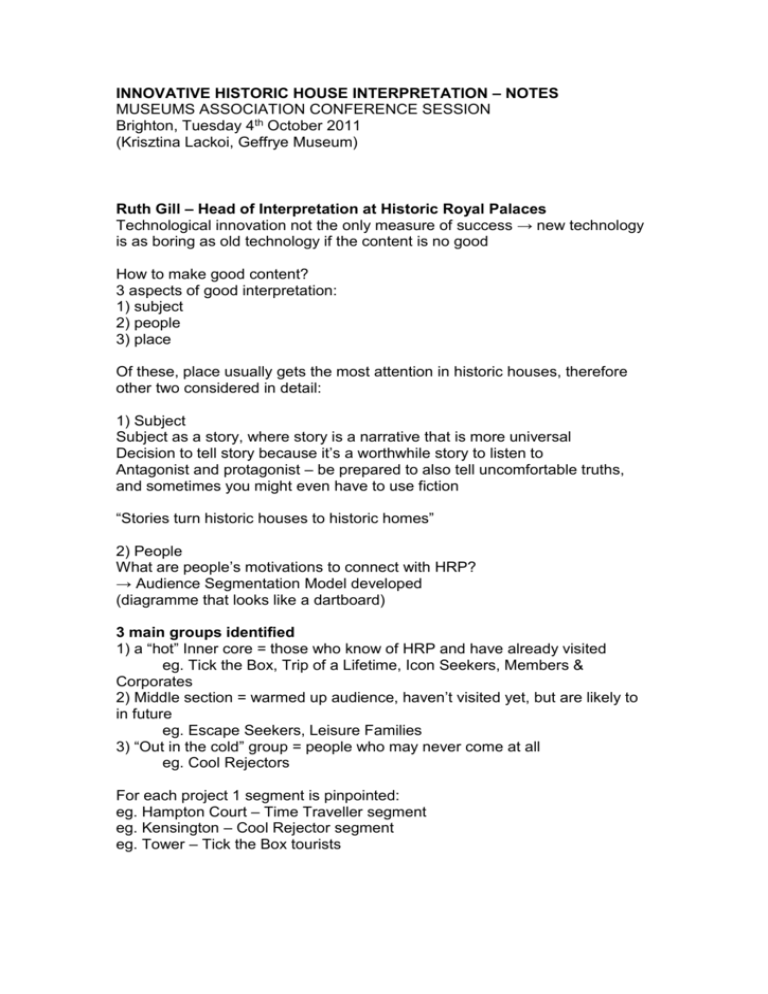
INNOVATIVE HISTORIC HOUSE INTERPRETATION – NOTES MUSEUMS ASSOCIATION CONFERENCE SESSION Brighton, Tuesday 4th October 2011 (Krisztina Lackoi, Geffrye Museum) Ruth Gill – Head of Interpretation at Historic Royal Palaces Technological innovation not the only measure of success → new technology is as boring as old technology if the content is no good How to make good content? 3 aspects of good interpretation: 1) subject 2) people 3) place Of these, place usually gets the most attention in historic houses, therefore other two considered in detail: 1) Subject Subject as a story, where story is a narrative that is more universal Decision to tell story because it’s a worthwhile story to listen to Antagonist and protagonist – be prepared to also tell uncomfortable truths, and sometimes you might even have to use fiction “Stories turn historic houses to historic homes” 2) People What are people’s motivations to connect with HRP? → Audience Segmentation Model developed (diagramme that looks like a dartboard) 3 main groups identified 1) a “hot” Inner core = those who know of HRP and have already visited eg. Tick the Box, Trip of a Lifetime, Icon Seekers, Members & Corporates 2) Middle section = warmed up audience, haven’t visited yet, but are likely to in future eg. Escape Seekers, Leisure Families 3) “Out in the cold” group = people who may never come at all eg. Cool Rejectors For each project 1 segment is pinpointed: eg. Hampton Court – Time Traveller segment eg. Kensington – Cool Rejector segment eg. Tower – Tick the Box tourists Keith Robinson – Learning and visitor experience consultant, National Trust Stories or stuff? → how to get your head around all this stuff? How to make connections on a gut level? Task: to transform the visitor experience Key Q: What’s the story here? How to move a story from the intellectual to the gut level? Some examples *Berrington Hall → Gorgeous interiors, everything looks perfect BUT was it really the perfect place to live? One rooms tells the story of a lady who lost 3 of her 4 sons in WWI, another looks at an apparently fairytale wedding that ended in divorce (probably due to domestic violence). *Upton House and Gardens → £1 BN art collections BUT was this a fortune well spent? Looks at the various ways in which millionaire Walter Samuel spent his vast fortune, including supporting many Jewish charities and serving as a Trustee for various museums and galleries. 1930s house party theme, can sit at piano, can play snooker, etc. *Croome Park → challenging conceptions Rewards and risks – mainly conservation risks – there may be some confusion about what visitors can and cannot touch Must have a menu of stories in order to keep your interpretation fresh Challenges: make more of stories and use stuff in more creative ways Janita Bagshawe – Head of Royal Pavilion, Brighton Conscious decision to bring controversy back into a building that was highly controversial in its time Contemporary craft intervention through the Museumaker programme - Clare Twomey’s A Dark Day in Paradise – an installation of 3,000 black ceramic butterflies in the Banqueting Room Beginning to tell the untold stories of the building eg. use as a hospital during WWI Challenge: how to tell multiple stories in properties over time? NB: session cut short when delegate had seizure [taken to hospital and was fine]



